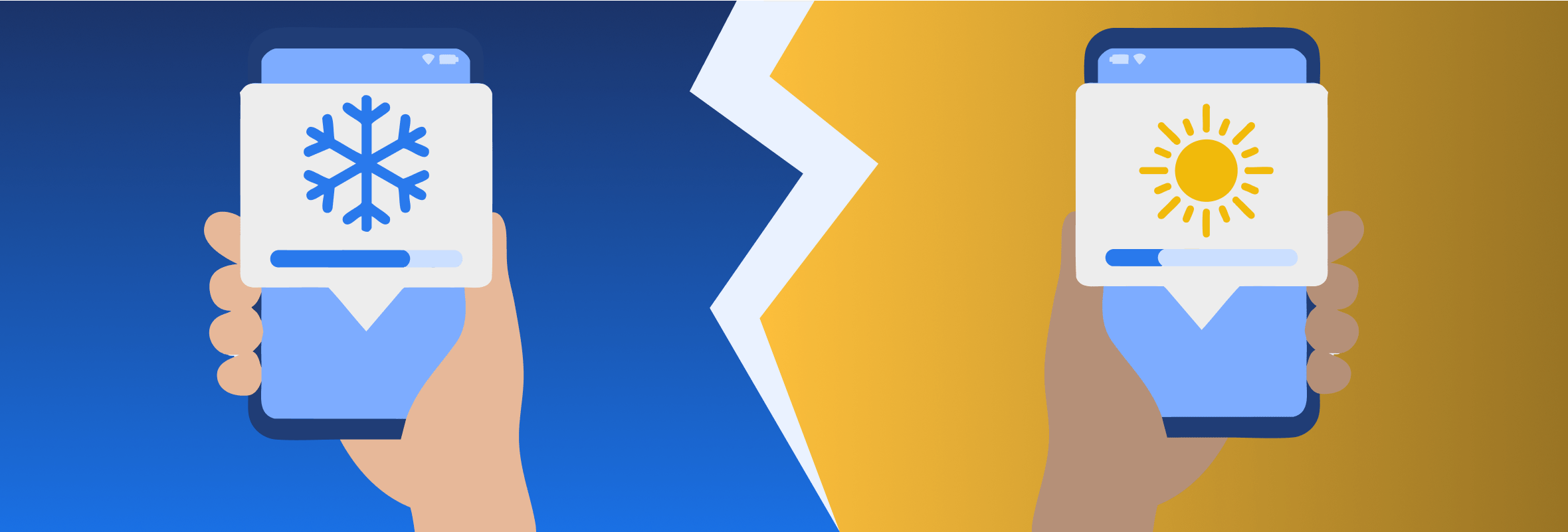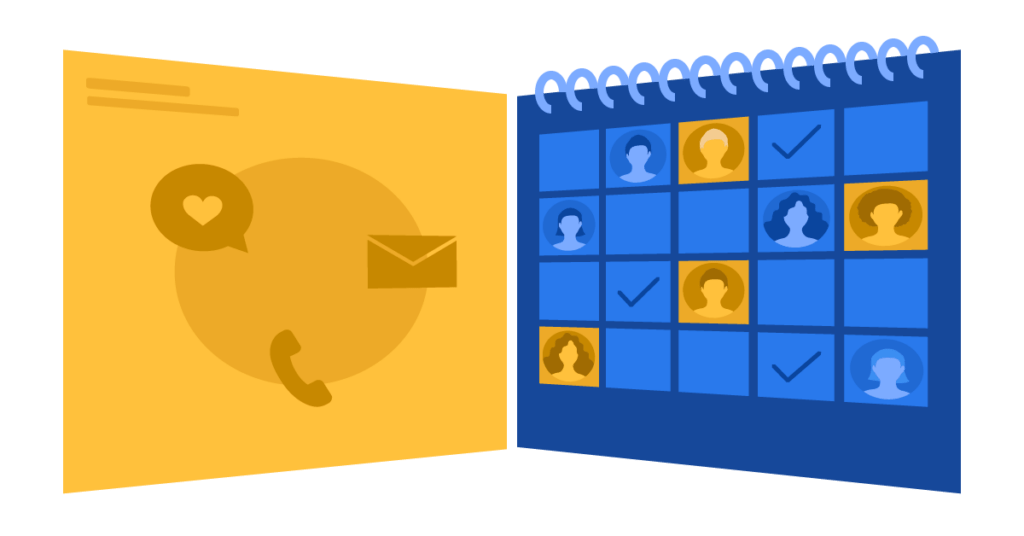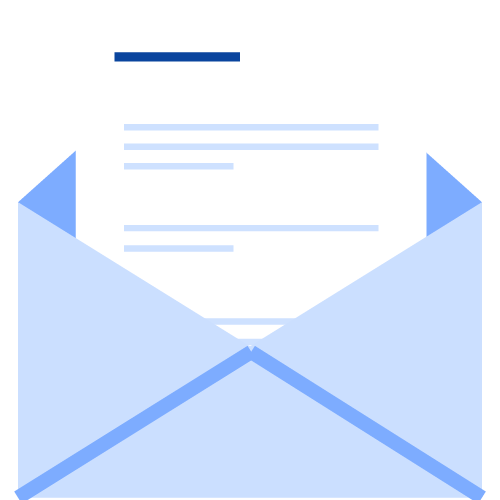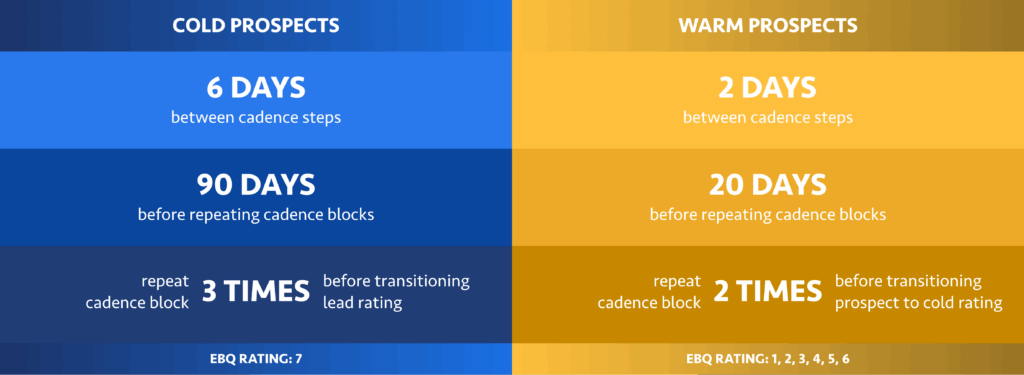Cold Calling vs. Warm Calling: What’s the Difference (Definitions, Tips, and Why You Need an All-bound Calling Strategy)


Stuart Bontrager
The days of searching through a yellow book to find contacts, making cold calls, and scheduling sales meetings are gone. But that doesn’t mean outbound calling is dead. It has simply evolved. Today, successful sales teams must strategically leverage both cold calling and warm calling to maximize their outbound calling efforts.
Understanding the key differences between cold calling and warm calling can positively impact your conversion rates, team efficiency, and customer experience:
Cold Calling
Cold calling is the process of contacting prospects who do not have any previous interactions with your brand.
Benefits:
- Test out new markets
- Proactive sales technique to maximize coverage
Tips:
- Don’t memorize a call script
- Understand your ICPs
- Don’t shut down the gatekeeper
- Use a lead scoring system
- Don’t give up immediately
Warm Calling
Warm calling is the process of following up on prospects who have already expressed interest in your brand
Benefits:
- Shorter sales cycle
- Stronger sales and marketing alignment
- Higher conversion rate
Tips:
- Respond immediately
- Prioritize warmer leads that align with the ideal customer profile (ICP)
- Personalize pitches by addressing pain points
- Establish a point of contact
- Follow up diligently
- Don’t memorize a call script
- Understand your ICPs
- Don’t shut down the gatekeeper
- Use a lead scoring system
- Don’t give up immediately
| Cold Calling | Warm Calling | |
|---|---|---|
| Definition | Cold calling is the process of contacting prospects who do not have any previous interactions with your brand. | Warm calling is the process of following up on prospects who have already expressed interest in your brand. |
| Benefits |
|
|
| Tips |
|
|
Now that we have a base understanding of what cold calling and warm calling are, let’s drill down on their individual characteristics, when to utilize them, and key tips to maximize conversions.

Download the Ultimate B2B Appointment Setting Guide
Learn what it takes to identify prospects, get in touch with decision-makers, and set more meetings for your sales reps.
What is Cold Calling?
Cold calling is the process of contacting prospects without any previous interactions between the prospect and the brand. Paradoxically, the concept of cold calling was invented three years before the telephone was even invented.
So how did they cold call without telephones? The idea was simple: to foster face-to-face interactions with prospects with the goal of earning their trust prior to offering solutions. That’s how the door-to-door salesman model grew in popularity.
As the world evolved, so did the modern cold calling methodology. Today, many business development representatives (BDRs) utilize automation and AI tools to increase their dials.

Subscribe to EBQ's Bimonthly Newsletter

Subscribe to EBQ's Bimonthly Newsletter
Benefits of Cold Calling
Cold calling is still an effective method to analyze new market opportunities, as your BDRs can contact target prospects directly and get their immediate feedback. Your BDRs can then gather more first-hand information to inform your future sales strategies.
Moreover, cold calling is a proactive method to immediately grab your target market’s attention. By leveraging a B2B contact database provider, your BDRs can focus on performing outbound outreach and generate enough interest to set a sales meeting
EBQ Tip:
Pay extra attention to your B2B contact database’s accuracy, as bad sales data can waste more than 25% of your sales rep’s time. In fact, some studies show that utilizing bad contact can cost up to $100 per contact point.
If you’re looking for clean and accurate B2B data, check out our B2B Data Services page. We designate a data technician and a fractional Data Manager to find, scrub, and create a custom list of contacts for your sales team.
5 Cold Calling Tips
At EBQ, we have established our framework to empower our BDRs to navigate the challenges of cold calling. Here are a few of our cold calling best practices:
- Don’t memorize a call script: Use your talk tracks as a guide to stay flexible to your prospect’s responses and keep the conversation flowing.
- Understand your ICPs: Knowing your target audience allows you to prepare for common objections and craft stronger sales messaging.
- Don’t shut down the gatekeeper: Developing rapport with gatekeepers allows you to build trust and ultimately get you in front of decision-makers.
- Use a lead scoring system: Prioritize your calls based on high-intent leads to help ensure conversion
- Don’t give up immediately: It often takes four rejections to get a prospect to agree on a sales meeting. Make sure you cover all your bases by following up diligently.

Subscribe to EBQ's Bimonthly Newsletter

Subscribe to EBQ's Bimonthly Newsletter
What is Warm Calling?
Warm calling is performing outbound outreach to prospects who have already interacted with your brand before. Unlike cold calling, your prospect is at least somewhat aware of your brand. Your goal is to distinguish yourself as a thought leader who can address their pain points accurately.
So, how do you get started with warm calling? In short, you must make it easy for your prospect to make the first move. We recommend diversifying your MQL lead sources and leveraging design best practices to drive form fills.
EBQ Tip: We also recommend leveraging a CRM platform like Salesforce to unify customer data across traditionally siloed departments. That way, your revenue-driving teams have a 360˚ picture of how each customer entered your sales pipeline to better inform your future sales, marketing, and even customer experience strategies.
Benefits of Warm Calling
Overall, there are four key benefits to warm calling:
- Stronger sales and marketing alignment
- Higher conversion rates
- Shorter sales cycles
Stronger sales and marketing alignment
Did you know that sales reps often ignore half of their marketing leads? There can be a number of valid reasons why those marketing leads go nowhere, whether that’s due to poor ICP match or even bad lead routing. That said, it is certainly frustrating for both the sales and marketing teams.
Warm calling ensures stronger sales and marketing alignment because most marketing leads are followed up on at least once. This enables the marketing team to see the results of their hard work, while the BDR team benefits from warmer leads and a more streamlined outreach process.
Higher conversion rates
Recent studies show you are 4.2 times more likely to schedule a sales meeting when there is an existing personal connection. Translation? Warm calling builds upon that existing relationship, thus making it more likely that the call will end in a sales meeting.
Shorter sales cycles
Warm calling can shorten the sales cycle by up to 32%. That’s because your BDRs do not need to spend as much time introducing your brand to the prospect; instead, they can focus on aligning your solutions to their unique needs.
Another reason for a shorter sales cycle is that a strong sales cadence often adjusts to how warm or cold the prospect is. Take a look at our sales cadence as an example. As you can see, we encourage the BDRs to promptly follow up with warmer prospects over a shorter period of time.

5 Warm Calling Tips
Warm leads have already shown interest in your brand. Now, it’s time to approach tactfully to convert curiosity into conversions.
Here are 5 warm calling best practices we employ to ensure maximized outcomes:
- Respond immediately: Follow up as soon as your prospect has shown intent to strike while the iron is hot. This increases your chances of a conversion.
- Prioritize warmer leads: Focus on prospects who are closer to converting, such as those who filled out a contact form. This allows you to stay top-of-mind and set a good impression.
- Personalize pitches: Leverage existing customer data to inform your sales pitch strategy. This aligns your solution with the prospects’ unique needs.
- Establish a point of contact: Building a relationship with a specific person within the organization creates an internal champion within the target organization. They will advocate for your brand and convince fellow decision makers to commit.
- Follow up diligently: Maintain consistent communication with the prospect without being pushy. After all, warm leads still need additional nurturing before they convert.

Download the Ultimate B2B Appointment Setting Guide
Don’t have time to read the whole guide right now? Download the PDF version of the guide.
Why do you need an all-bound calling strategy?
Relying solely on cold or warm calling is not enough. To build a scalable, resilient sales pipeline, your team needs an all-bound calling strategy: a hybrid model that blends inbound signals with outbound activity.
An all-bound strategy empowers your organization to:
- Maximize lead coverage
- Align your revenue-driving team
- Leverage intent data
- Improve sales productivity
Cold calling and warm calling have their place in generating sales activity, so you need a BDR team that can perform both functions effectively. If you’re looking to accelerate your business development goals, consider partnering with EBQ’s BDR team. Our reps are trained to work as an extension of your sales team, ensuring every lead has the best chance to convert.

About the Author:
Stuart is one of EBQ’s Revenue Consultants with over 20 years of experience in Sales. His tenure as the VP of Sales sharpened his expertise in translating business visions into lead-generation tactics.
